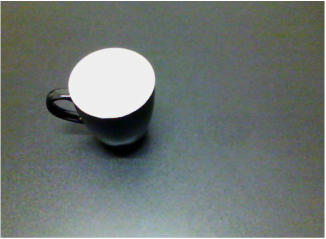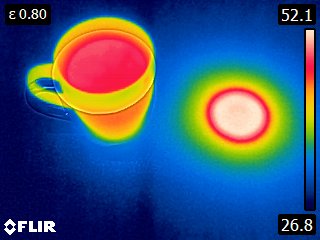
Thermal imaging inspections – why are they important and what do they find?
imaging is important and the types of defects that thermal imaging may help identify around a building.
The Australian standard AS4349.1 Inspection of buildings
Part 1: Pre-purchase inspections – Residential buildings states that a pre-purchase building inspection is visual only. As such, it is often difficult to accurately identify certain building defects without the aid of specialised equipment. The Australian standard also states that the inspection is not intended to include rigorous
assessment of all building elements in a property. As the average inspector will be inspecting a property for
anywhere between 1-3 hours, it is not plausible for them to individually test every roof timber in the roof for
example. This is why thermal imaging is essential to the inspection process. Additional defects can be identified before they cause significant structural damage, and more of your home can be assessed in the time that the
inspector has on site.
How does thermal imaging work?
Thermal imaging is a measurement of the surface temperature of a material. A simple demonstration
is as follows:
|
A mug with hot water. Everything seems normal.
|
The thermal camera catches details we can’t see with the naked eye.
The mug was recently moved to its current location. We can see the mug’s previous position as the area has retained some of the heat. |
What can a Thermal Imaging Camera Detect?
A thermal imaging camera can assist in the detection in many defects around a building, especially areas of
excessive moisture. Common defects that may be identified include:
Roof Leaks
Water will find its way through the smallest of perforations within a roof. Additionally, even if a roof perforation is identified visually, the damage caused by the leak may in fact be several metres from where the perforation was identified. Thermal imaging can assist in identification of the leak as well as an assessment of the areas affected and the damage caused. For example, let’s say a cracked roof tile has allowed water to leak onto a rafter in a
timber roof. The water may have run down the rafter and affected the roof battens supporting the roof tiles. In this instance the inspector would identify the leaking area with the thermal imaging camera, use the sounding tool to assess the area of moisture damage, and confirm the state of decay with a moisture meter. The
inspector’s expertise combined with the inspection aids ensures that adequate analysis has been carried out. If the roof timbers are found to be in a state of decay, this is a structural issue and may have saved you thousands of dollars in repair work prior to moving into the property. As the roof battens are also quite small in size the
decay that they have suffered may indicate that the weight of the roof tiles may cause collapse. Decay also works in a capillary action, and as such the damage may spread prior to collapse, which may result in tens of thousands of dollars in structural damage as well as risk of injury to occupants within the building. The example above is just one scenario in which roof leaks can be found to cause a structural issue, as many other scenarios may require further investigation. For example, if in the same scenario a small perforation is present in a building with a steel-sheet roof, how long would the decay spread before the roof actually collapses? The cost of
re-roofing could escalate dramatically prior to this defect being identified.
Shower Leaks
Ever seen the skirting board at the back of the shower beginning to ‘bow’ away from a wall backing onto a shower recess? Chances are this is due to a shower leak. This may not be considered a structural issue when an inspection is conducted, although the cost to remedy a small leak in a shower recess could save you money in the future. Additionally, even the smallest of shower leaks can result in the excessive moisture levels causing mould growth beneath the surface of the walling, which could have adverse health effects to your family.
Unfortunately this is an extremely common defect that we find when inspecting homes around Perth, and
although it may not immediately threaten the structure of the building, it should be rectified nonetheless.
Defective or Missing Insulation
As building regulations and compliance guidelines continue to promote energy efficient homes, often the
installation of energy efficient products deter the results of the desired effect. This is particularly the case with insulation. A thermal imaging camera can detect areas where insulation is missing or poorly installed. For
example, often insulation is not tucked into the corners around the external of the building where the cornice is located, and as such the building is not adequately insulated. Additionally, an electrician may have installed downlights and to achieve the necessary clearance of insulation just pulled it back as opposed to installing downlight covers. In this instance it may prove cost effective to obtain a price from a suitably qualified person to make the necessary upgrades and increase the energy efficiency of the home. This is especially applicable to Perth residents due to our hot climates and increasing energy bills.
Termite Identification
Termites may have travelled undetected up the cavity of the building, and straight into roof timbers, and as such the damage they are causing would be unidentifiable to the naked eye. As termite workers continue to digest the timber within the building, their bodies omit heat. As such thermal imaging may assist in the
identification of termite damage. Upon this finding, our inspector will use a combination of the Termatrac T3i as well as a sounding tool to further investigate the presence of termites. Termite identification is a skilled task, and termites are notoriously shy creatures, so care must be taken to engage an adequately qualified and equipped
inspector to undertake this task. Most recent figures indicate that the average repair cost for termite damage to a home is $7,000, and that at least 1 in 4 homes in Australia will be affected by termites.
The above list is not exhaustive and is merely an indication of the capabilities of thermal imaging.
Thermal imaging is a growing technology and its uses continue to grow. For example, as well as being used in the building industry, it is also used in areas such as plant and mechanical engineering, and has even been used to spot medical issues and injuries by doctors and veterinarians in both human and animal patients.
Can Anyone Use a Thermal Imaging Camera?
The images that are displayed on a thermal image don’t always tell the full story. Reflected heat may give false readings, and certain building materials may require differing assessments. For example, differing interpretations may be required if assessing a roof covering with black roof tiles as opposed to a white steel-sheet roof. This is because the two materials have different emissivity values. The emissivity of a material is the relative ability of its surface to emit energy by radiation. It is the ratio of energy radiated by a particular material to energy radiated by a black body at the same temperature. A true black body would have an emissivity equal to one while any real object would have an emissivity less than one. Emissivity is a dimensionless quantity.
In general, the duller and blacker a material is, the closer its emissivity is to one. The more reflective a material is, the lower its emissivity. Highly polished silver has an emissivity of about 0.02.
If your inspector hasn’t been trained in thermal imaging and doesn’t understand these principals, then the use of their thermal imaging equipment may be rendered useless.
How Much Does a Thermal Imaging Inspection cost?
At Cap-It-All Building Inspections we see thermal imaging as an additional layer of customer service which
allows us to conduct the most thorough and efficient inspection possible. As such thermal imaging is
incorporated into all of our prices, and we will conduct investigations in all areas that we deem necessary during the inspection. Our price list can be found here, and enquiries can be made through our website here.
Alternatively, give us a call on (08) 9405 8710 and we would be more than happy to discuss your inspection needs.


